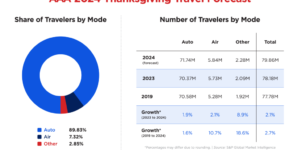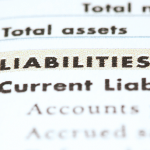
Assessing the roof on a commercial property involves more than an isolated snapshot of a single building component. A roof can tell the story of past events and possible future exposures affecting an entire property.
But it takes the right tools to glean this information. Without it, insurers can face multiple challenges:
- A carrier can end up paying for pre-existing damage that occurred before the current policy was written—and may have gone undetected for months or years.
- The presence of rooftop equipment such as solar panels or air conditioning may come as a surprise, only revealed when it becomes a factor in a large claim.
- On-site rooftop inspections can become costly to the insurer and disruptive to the policyholder when better upfront data could have yielded the same information.
Covering the essentials
When underwriting a roof, the primary concern is the likelihood of a loss and the cost of replacing that roof. It’s therefore essential to assess the roof’s current state, how quickly it is degrading, and its maintenance history.
A roof assessment without an on-site inspection begins with aerial imagery, which can show visible indicators of damage from ponding water, wind, hail, or simply age, as well as equipment that may have been added to the roof since it was built or last replaced. Relatively low cost allows for frequent updates to this imagery, making it easy to obtain historical comparisons over short intervals. These can show in detail how the roof’s condition improves, degrades, or remains stable.
Beyond the images, permit data can help pinpoint the roof’s age. Weather analytics can catalog past events that may have affected the roof and project the annual potential for more wind, hail, or other weather perils that may cause a covered loss or shorten the roof’s lifespan.
Wide applications
This information can become critical when evaluating exposure to potential roof loss throughout the policy life cycle. For new submissions, roof condition can point underwriters to other possible aspects of the customer’s risk profile. Do they invest in proper maintenance of other building systems and keep up with general housekeeping?
At renewal, has the roof incurred damage or excess wear from windstorms or hail events during the policy term? It’s far better to spot an issue and have the insured address it than to incur a claim from water leakage secondary to unreported roof damage.
Putting it all together
The challenge is to find a unified source of data and analytics presented in a digestible, easy-to-use format. One such source is Verisk’s Roof Underwriting Report, which provides:
- Current and historical roof imagery
- A roof condition score to help guide triage and automated underwriting review and inspection decisions
- A directional indicator of the roof’s condition over time—positive, neutral, or negative—based on the imagery
- Key roof details, including notable conditions and estimated age
- 360Value® roof replacement cost estimate
- Hail and wind risk scores
With a complete picture of the roof in its historical and environmental context, commercial property underwriters can grasp a crucial element that contributes to a fully rounded risk assessment.
Download a sample report and learn more about Verisk’s roof underwriting for commercial risks.
By: Gavin Mills, Binh Huynh




















 Allstate October Catastrophe Losses of $286M Include Milton, Helene
Allstate October Catastrophe Losses of $286M Include Milton, Helene  Bumps Ahead as Disruption Drives Changes in Auto Insurance
Bumps Ahead as Disruption Drives Changes in Auto Insurance  The Evolving GenAI Journey: Three Ways the Technology Is Impacting P/C Insurance
The Evolving GenAI Journey: Three Ways the Technology Is Impacting P/C Insurance  Swiss Re Execs Sleeping Well After $2.4B Q3 Reserve Boost
Swiss Re Execs Sleeping Well After $2.4B Q3 Reserve Boost 